Listen To Bob Green & The Winner
![]()


![]()
(Above WKNR survey image property of Keener13.com. Courtesy Scott Westerman and keener13.com).
ON THIS DATE: LEGENDARY WKNR FADES OUT IN 1972. For more on closing the book on this storied Detroit radio chapter, MCRFB takes you back one year ago today with this story, April 25, 2012. (Above: the very first WKNR Music Guide issued; November 7, 1963)
WKNR-AM FLASHBACK: Keener all-nighter Bill Phillips (audio; 12/27/64) all smiles behind the microphone and the music on the No. 1 rated Top 40 radio station in Detroit, 1964.
![]()
 From the MCRFB news archive: 1963
From the MCRFB news archive: 1963
NEW NBC RADIO VICE PRESIDENT POST WILL BE TOUGH ASSIGNMENT FOR MIKE JOSEPH
NEW YORK — Broadcasters did double-takes last week upon hearing of the appointment of Mike Joseph, former program consultant, to the newly-created post of vice-president, NBC-owned radio stations.
Joseph, long-associated with what is usually called swingin’ pop-music formatted stations, will be taking over the reins of one of the nation’s richest and most unsuccessful group of radio station operations owned by the network.

At this juncture Joseph’s duties have not been spelled out. No matter what his duties, he will have his work cut out for him.
The six NBC-owned radio stations are perhaps — as a group — one of the best examples of a low audience appeal approach to broadcasting.
Bottom Of Heap
A thumbnail analysis of each station’s market position reveals the following:
WNBC, New York (50,000 watts): 10th place. One service gives it sixth position 7 a.m. to noon, and 11th, noon to 6 p.m.
WMAQ, Chicago (50,000 watts): Tied for fifth place, 6 a.m. to 6 p.m. From 6 p.m. to midnight, ninth. Another service is much kinder, rating the station third in the morning and fourth in the afternoon.
KNBR, San Francisco (50,000 watts): Tied for fifth place in the morning and seventh in the afternoon. Another service rates it sixth in the a.m. and eighth in the p.m.
WRC, Washington D. C. (5,000 watts): Eighth place out of nine stations listed.
WRC, Washington D. C. (5,000 watts): Fourth in mornings and sixth in the afternoon and evening. This outlet tops all others in the NBC chain achieving first place in the morning and third in the afternoon on one rating service.
WJAS, Pittsburgh (5,000 watts): Tied for last place morning and night; last place in afternoons.
It is highly unlikely that four of the six stations could stand on their own financially without being carried by mother flagship network NBC.
Industry observers attribute the sorrowful rating picture of the NBC-owned radio stations mainly due to the fact that they are satellites for the financially successful NBC radio network. The family stations must carry all of the network’s programming, including the full load of “Monitor” Saturdays and Sundays no matter the effect on rating. Affiliates have a choice of scheduling and percentage of net shows carried.
What little there is left for the beleaguered six stations to program on their own is dictated from the sixth floor of 30 Rockefeller Plaza where the attitude had been: close down before playing rock and roll, no editorializing, no promotion, etc. The top echelon of NBC has persuaded itself that it is more in the public interest to sacrifice popularity and listeners for image. Apparently the image is fading as quickly as the listener audience in general, translating in poor ratings overall.
In sharp contrast to the NBC operation is the highly successful, aggressive, and modern, ABC-owned radio stations headed by Harold Neil. Each of the ABC stations are for the most part, operated independently with local management calling the shots as to how best serve their immediate communities. ABC places few taboos on their stations.
ABC advertising and promotion in behalf of its owned radio stations has been brilliant and outstanding. CBS has also followed a course of promoting their stations through ads in the consumer and trade press. Although there is a proliferation of other NBC advertising, promotion of its owned radio stations is a rarity.
Speculation has it that no vice-president — however talented and capable as Mike Joseph is successfully known for his brilliant approach in various radio consultations and changes he implemented during the course of this year alone — will be able to solve the dilemma of the NBC-owned radio stations without a complete change of thinking and approach by the two men who are presently calling the shots for NBC radio, Robert Kintner and Robert Sarnoff. END
___
(Information and news source: Billboard; December 28, 1963)
![]()
 Former WKNR and WMCA Deejay Hits Big Today As President of Doubleday Chain
Former WKNR and WMCA Deejay Hits Big Today As President of Doubleday Chain
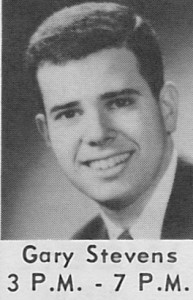
NEW YORK — Consider for a moment how the major broadcasting chains evolved into the forces they are today: companies like Westinghouse, Bonneville, Gannett and Malrite, all rich in history but not quite like Doubleday Broadcasting — “which really should not exist,” suggest Doubleday president Gary Stevens. “The only reason it does because I couldn’t get a job. People wanted to generalize me as an ex-deejay who had no business acumen.”
In all fairness to a near-sighted industry, never before (or since the likes of) Gary Stevens, formerly a night-time Top 40 disk jockey, has led to running a radio station. The road to management usually runs through sales, and occasionally takes a left turn through programming.
Gary is the first to point out it wasn’t easy. “Even after I’d been successful in Phoenix and Minneapolis, nobody would take me seriously. I knew that if I wanted to do what I’m doing, I had to build my own company.”
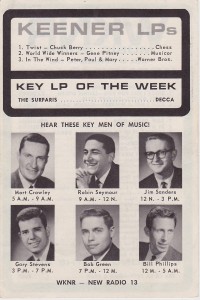
Stevens has become more than a builder. He’s the architect of one of the fastest-growing chains of radio properties in America. Interested in broadcasting since the age of eight (“my mother would take me down to sit in with the jocks at the local station”), the son of the chief executive officer for a chain of Buffalo department stores started his career ay WWOW in Conneaut, Ohio while on vacation from college.
The next years at the University of Miami brought him work at several stations, including WCKR and WAME, “where I worked with Frank Ward, one of my idols. He was one of the four guys who were ‘Guy King’ at WWOL. The other three were Tom Clay, Bruce Bradley and Dick Purtan. Some of the guys who went through Buffalo were amazing,” reminisces Stevens.
From WAME, Gary gravitated to WFUN, which had just signed on the air in Miami, “where I stay until 1961, where I left to go to WIL in St. Louis. My whole career moved so quickly because I worked with such good people and I learned from them. WIL had Ron Lundy in afternoons; I did seven to midnight; Dan Ingram, who had just left to go to New York; Roger Barkley; Gary Owens. I kept finding myself in the company of excellent people. I was there from 1961 to 1963, when Mike Joseph hired me to go to WKNR in Detroit.
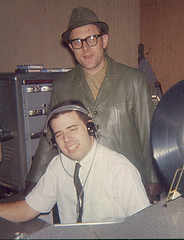
In 1965 I came to New York. I’d been pitching Ruth Meyer (the program director at WMCA) since St. Louis. When I went to Detroit, I sent her a note and said, ‘watch what we do.’ I’d figured if we did what we said we would, I’d have a job, and if we didn’t, she wouldn’t remember anyway.”
She remembered. In just two monthly Hoopers, WKNR emerged as the No. 1 station in Detroit, climbing over such giants as WXYZ, WJBK and CKLW. It wasn’t long before Gary Stevens wound up where he’d always wanted to be, on the air in New York City. “I stayed there (at WMCA) doing nights until 1968, when I didn’t want to be on the air anymore. I moved to Europe, which was something I’d always wanted to do.”
When Stevens returned to the United States, he learned the harsh realities of being a former WMCA ‘Good Guy’ in search of a management position. In spite of the grim prospects, his perseverance paid off when he heard that Doubleday Broadcasting was about to acquire KRIZ in Phoenix. “I called the president and told him about my background. I paid my own way to Dallas, where the company was located at the time, to talk to him about the job, and he hired me on the spot,” Stevens recalled.
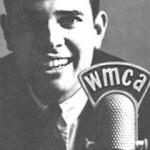
“I went to KRIZ after having been gone for two years, and I put on the greatest 1968 radio station you ever heard — in 1970. We bombed. We were almost run out of business, but then I analyzed what was wrong and we fixed it. We became the highest rated Class IV in the United States, as well as perhaps the highest billing 250-watter. I stayed there until 1974. The truth is, nobody else took me seriously as general manager. The disc jockey thing still hung over me.”
So when an opening came within the Doubleday chain for a manager at KDWB in Minneapolis, Stevens went for it. “When I got there, there was KSTP consulted by Burkhart, Storz’s WGDY, and WYOO, which had just come in. We beat ’em all, and by 1976 I still couldn’t get a job. I thought, ‘How many times do I have to do this?’ “
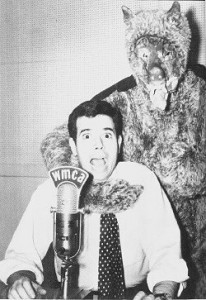
Before Stevens had the chance to contemplate the answer, an offer to manage a large East Coast station won him a promotion within his own company. He was named senior vice-president director of research. “A lot of people don’t know this, but nobody before us was doing music research. When Todd Wallace joined us at KRIZ, he was the first guy to market a a music research system. Steve Casey was our all-night man and a computer nut. He refined the system and suggested things like playing parts of a song to listeners over the phone” — which, while commonplace today, was quite innovative in the early-1970s. Casey followed Stevens to Minneapolis along with another KRIZ personality, John Sebastian. “John became our program director. You heard of Sabastian/Casey, well, they got together under me at KDWB.”
In 1977, a change in the structure of Doubleday led Stevens’ being named president of the company. Since that time, Doubleday had gone through several changes and emerged as a force to deal with: “It’s only in the last two years that people are taking us seriously. Actually, this company has benefited by the underestimation of it’s abilities. A few years ago, many people thought Doubleday was getting out of radio. We’d sold half the company. All we had was Minneapolis and Denver and a construction permit for St. Louis.”
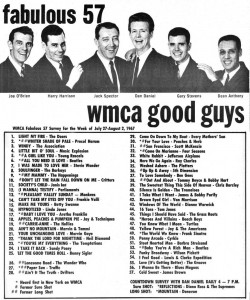
But Stevens was far from ready to fold. “By then, there was no question where FM was going. I got us into the right technology, selling our AMs and buying only FMs starting with Detroit. One thing I learned in Phoenix is was that you work harder for less money in smaller markets, so our central core strategy was top 20. But after our experience in Detroit, I realized the big markets brought three to five times the return, and redefined that strategy as top 10.”
Assessing the future, Stevens is ambivalent about the fate of his two remaining AM properties. “Our AMs don’t cost us anything to operate, but they don’t bring in any revenue either. I don’t see any future in AM. As for AM stereo, it’s too little too late. The problem between AM and FM is coverage, not stereo. AM stations were engineered 30 to 40 years ago, and they don’t cover today’s market.
“Nobody could have envisioned the tremendous growth our cities have undergone, and because of that, most AMs can’t compete. FMs being non-directional are winning to a great degree because of a signal advantage. So AM stereo won’t be a solution to the basic problem.”
The Doubleday chain currently includes WAPP in New York, WAVA in Washington, D. C., WLLZ in Detroit, KDWB AM-FM in Minneapolis, KWK AM-FM in St Louis, and KPKE in Denver, and is in the process of acquiring WMET in Chicago from Metromedia. All are operated under what Stevens terms “the module concept, where all the stations are similar in format and facility.” (Once Top 40, the chain is now AOR, a move Stevens generally credits to former Doubleday program director Bob Hattrick).
“While we’re committed to AOR for the foreseeable future, we really look at our company as seven very good FMs in seven very good markets delivering whatever the public wants. Keeping the philosophy and physical setups the same is the reason we’ve been able to grow so fast. And though there are enormous musical differences among the stations, the positioning and promotion remains consistent, and that gives us a good synergy and allows our people to become interchangeable from station to station.”
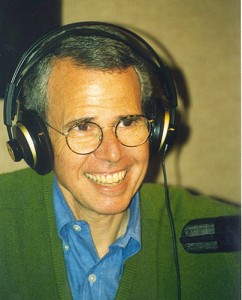
People is a key word with Stevens. “That’s the edge we have. Our people last. Most people don’t want anybody good. They feel threatened by them. I really believe that. One of radio’s biggest problems today is the definite lack of professional management. Radio is a margin business, not a gross sales business. Two bad books and you lose your revenue. And while revenues in this business have been increasing each year by about 10%, profits have been consistently going down. That’s a stunning indictment of management’s failure to realize that they’re operating a margin business. And that impacts all of us because we get our future management from the system that’s producing these people. And I want the best I can get.”
Stevens’ track record is indicative of a man who gets what he wants. A list of his former programmers, for instance, read like a radio who’s who. Names like Todd Wallace, Dan Clayton, John Sebastian, Gerry Peterson, Dave Hamilton and Bobby Hattrick, most of whom were in their infancy when they came to Doubleday, had gone on to notable careers.
“From 1970 to the present, we’ve had an unending strings of successful program directors who have emerged from nowhere. I don’t program the stations. But I know how to pick a good program director.”END
_______________
Information, credit and news source: Billboard; December 18, 1982
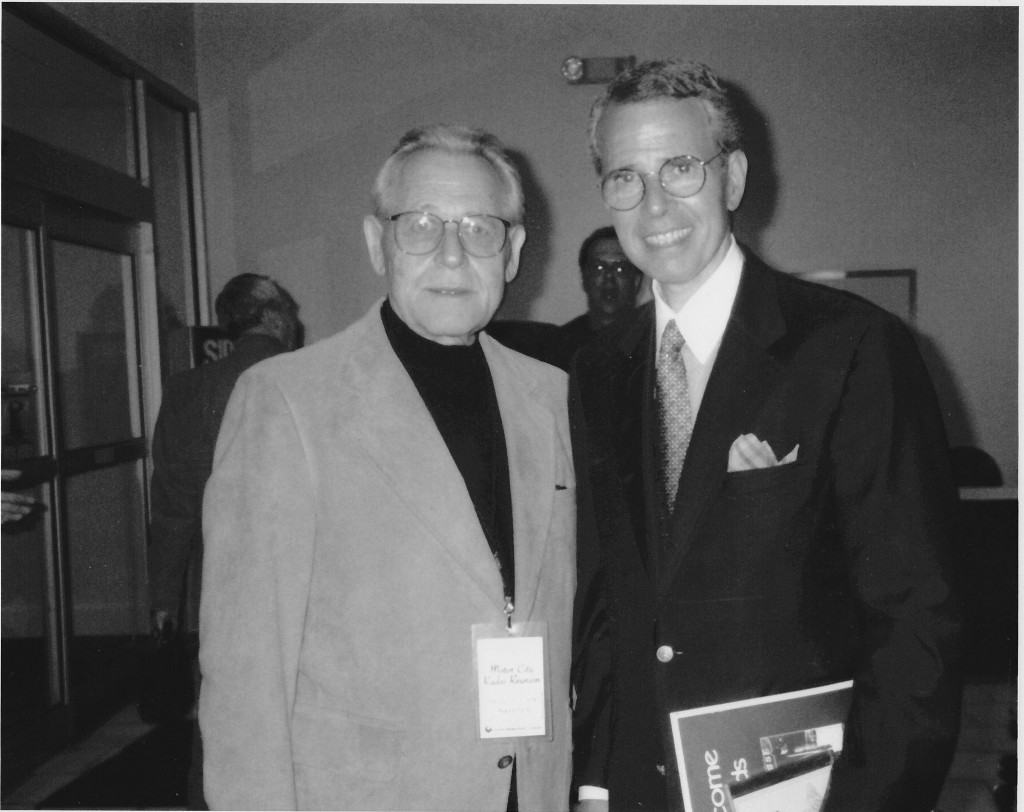
![]() A MCRFB note: Here’s a recent article still on the internet MCRFB found on Gary Stevens today. While the article is dated March 23, 2010, it is still currently posted on the allaccess.com website.
A MCRFB note: Here’s a recent article still on the internet MCRFB found on Gary Stevens today. While the article is dated March 23, 2010, it is still currently posted on the allaccess.com website.



![]()
WKNR – ESSENCE OF KEENER 13.mp3
(Extraordinary, classic WKNR slide photo above — courtesy collection of Steve Schram and Scott Westerman’s Keener 13 Facebook page. To view the rest of Steve Schram’s 1965 WKNR 33 color slide presentation there, click here!)
![]()
‘RUBBER SOUL’ A WHOPPER FOR BEATLES
 NEW YORK – The Beatles have topped themselves – again – their latest Capitol album sold 1,200,000 copies in its first nine days on the market. This, according to Capitol Records, breaks every sales record previously held by the Beatles.
NEW YORK – The Beatles have topped themselves – again – their latest Capitol album sold 1,200,000 copies in its first nine days on the market. This, according to Capitol Records, breaks every sales record previously held by the Beatles.
Capitol reports that the album has been selling at a clip of about 140,000 copies a day ever since its release on December 6, 1965. The new Beatles LP picked up its heaviest sales in the New York area, selling over 200,000 copies in nine days. In at least four other areas, Boston, Chicago, Los Angeles and San Francisco, sales figures total well over 100,000 for the same period.
Capitol initial allocation on “Rubber Soul” of two million units is also its largest ever, on any album. As of mid-month (December figures), 60 per cent of that allocation sold.
The album was formally certified by the RIAA as a million seller last week. END
___
(Information and news source: Billboard; January 1, 1966)
MCRFB Addendum
___
From the MCRFB aircheck library listen here when WKNR’s Bob Green debuted also, for the very first time on his show a track from the newly-released ‘Rubber Soul’ LP on Keener 13 in December, 1965 . . . “. . . And this one is showing up on the Top 3 plus 1 voting nightly on the Scott Regen Show.”

![]()